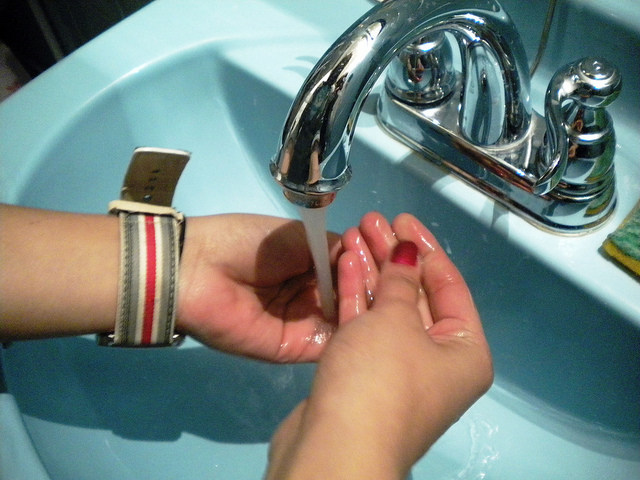
If you have eczema, you know that managing it is an ongoing process. Eczema tends to come back, go away, and come back again, often depending on the circumstances in your life. Fortunately, if you remember certain steps and incorporate them into your daily routine, you can greatly reduce your flare-ups and enjoy healthier, more comfortable skin.
To make it easier for you, I’ve broken down the three basic steps as follows:
1. AVOID contact with triggers or irritants.
2. ALWAYS moisturize safely.
3. ANTI-INFLAMMATORIES if necessary.
Let’s talk about each of these individually. First, avoid contact with triggers and irritants. Do you know what your triggers are? For some people, it’s allergens. Maybe you’re allergic to nickel or lanolin or dyes or even gluten, all of which can trigger a flare-up. If you’re not sure, check with your allergy doctor and see if you can get a patch test, which will help you narrow down those things that react badly with your skin.
What about irritants? Things like fragrances, harsh chemicals in personal care products, detergents, fabric softeners, soaps, sulfates, and even certain fabrics can all irritate skin, break down the outer layer, rob skin of moisture, and increase your risk of a flare-up. Try your best to avoid all toxic irritants by purchasing fragrance-free personal care products made without sulfates, ureas, or the other toxic ingredients I mention here. Look instead for safer products made with nourishing ingredients like shea butter, aloe, essential oils, honey, calendula, cucumber, jojoba, olive oil, etc. Wear soft cotton fabrics, and wash in fragrance-free, dye-free detergents. Finally, when you’re gardening, cleaning, or handling harsh chemicals, wear gloves and long sleeves to protect your skin, and always use sunscreen.
Next, always moisturize safely. You probably already know that compromised skin needs extra moisture. Because the outer layer has been damaged, skin more readily loses its own natural oils, and has a harder time holding onto moisture in general. That means you need to moisturize more often than people without eczema. Put a bottle of safe lotion next to every sink where you might wash, carry some in the car, and make sure you have some at work. Make it a habit to apply your lotion every time after you wash your hands or face, after every shower or bath, and every night before bed. Use a humidifier in your bedroom if you live in a dry climate, and use lukewarm water to wash. Finally, be sure you’re using safe, fragrance-free products full of nourishing moisturizers that won’t further damage your skin.
If these methods don’t do enough to manage your condition, talk to your dermatologist about anti-inflammatory medicated creams. They help reduce inflammation and are currently the leading treatment for people with eczema. Exactly how much and what strength is something you will need to determine with your doctor. The best method is to try to use the weakest strength possible that will still bring you benefits. That way you can use the cream when you need it without having to worry about side effects.
Since eczema is not curable, taking these three steps regularly in your daily life can help you cut down on discomfort and irritation. Try to incorporate them into your regular routines, and pretty soon you’ll be going through the motions without even thinking about it-and enjoying more attractive, comfortable skin.
Do you have eczema? How do you manage it on a daily basis?
Photo courtesy kkeyla! via Flickr.com.

